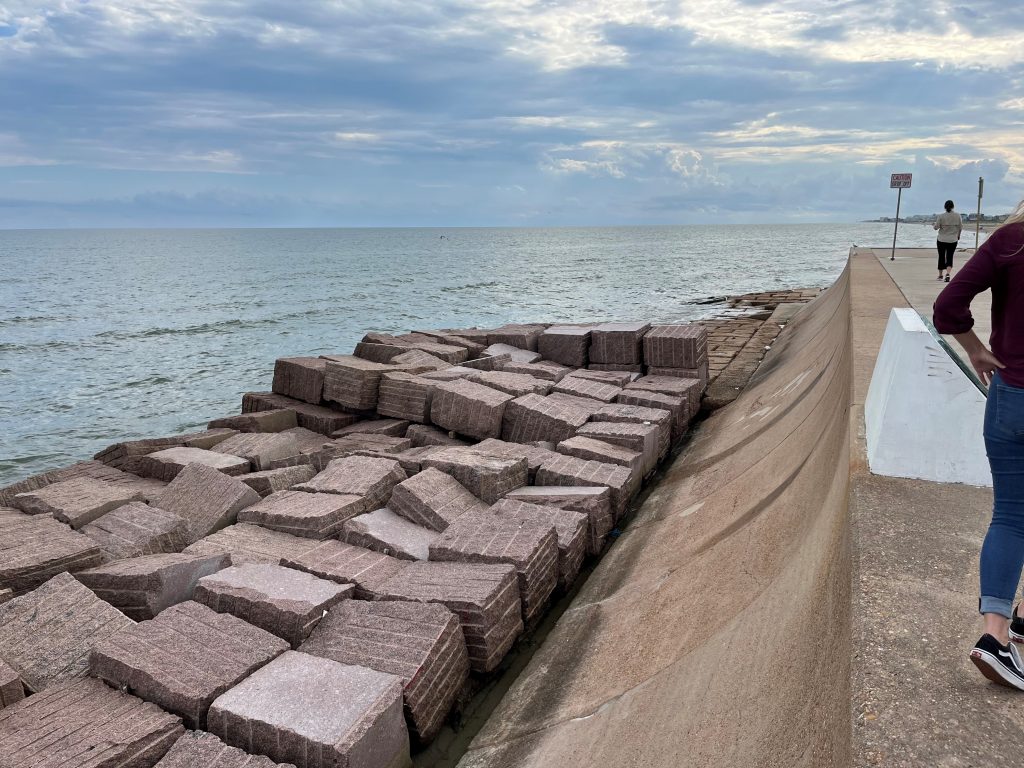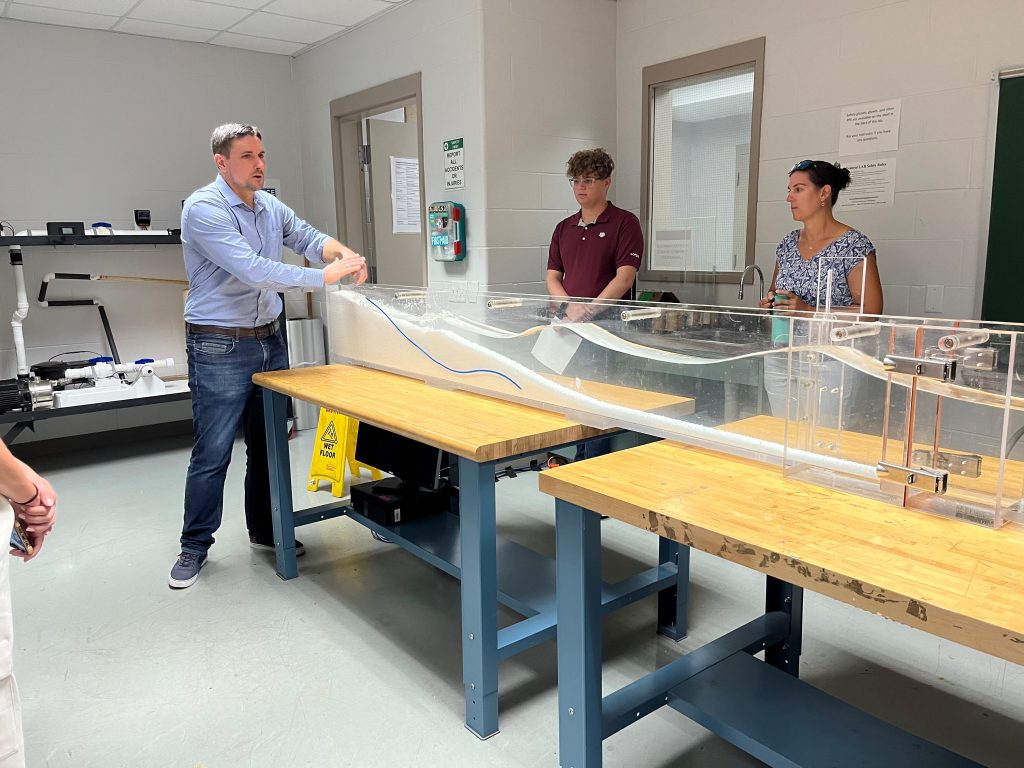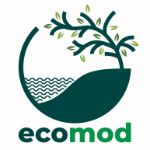NBS AT TEXAS A&M
Drs Thomas Huff and Safra Altman visited Texas A&M in Galveston to share information on Nature Based Solutions!
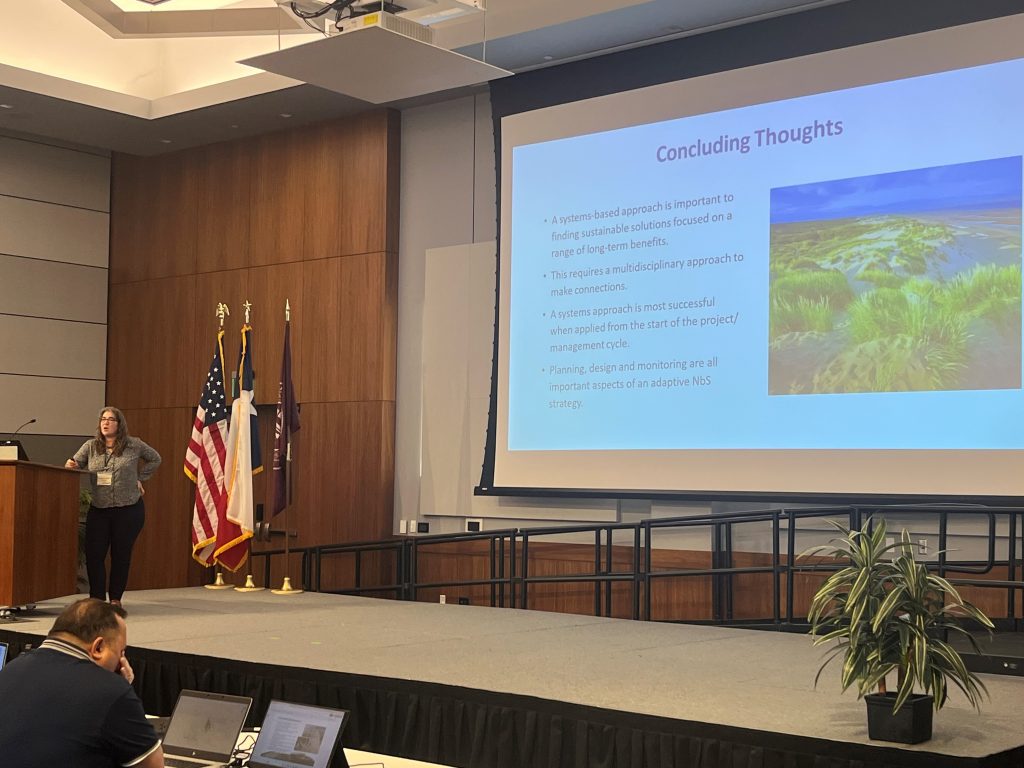
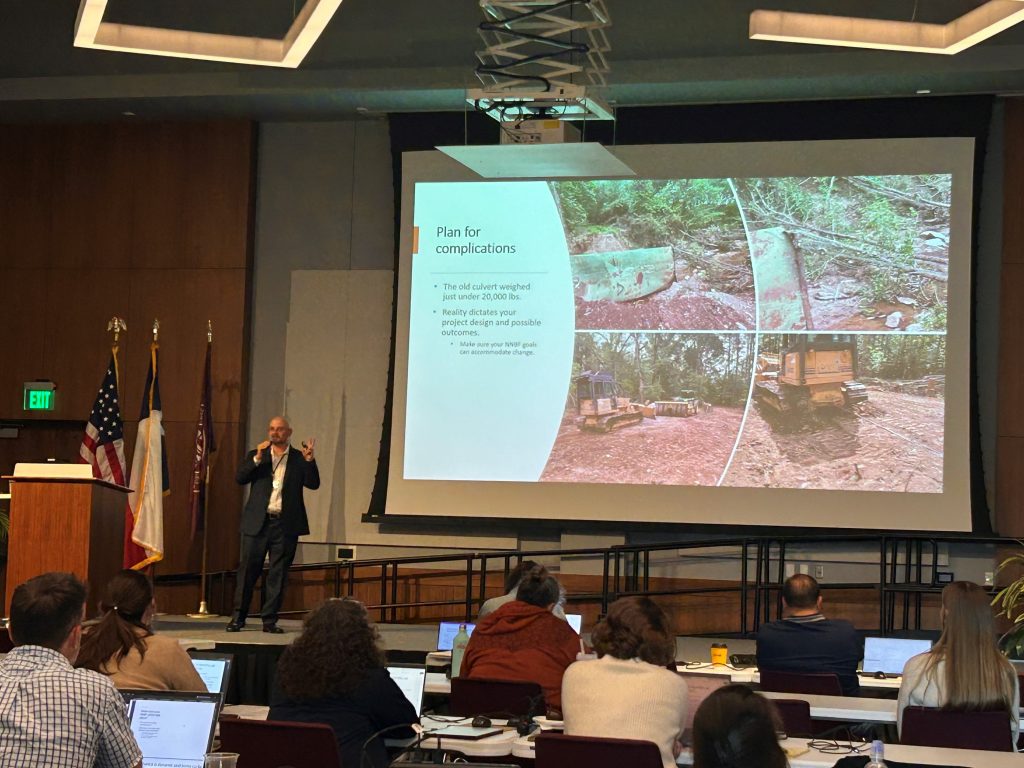
MOBILE DISTRICT CHARRETTE
A design charrette occurred October 29th and 30th in Freeport, Florida. This meeting brought together the USACE Mobile District and the non-Federal sponsor Walton County, as well as stakeholders from local, state, federal, and non-profit entities. Environmental Laboratory researchers Kyle McKay, Candice Piercy, Jacob Berkowitz, and Rosamar Ayala-Torres attended to provide ecological restoration expertise and to identify areas for scientific research.
Goals of the charrette were to:
- Agree on study boundaries, goals, and objectives
- Understand the USACE Planning Process
- Identify implementable measures, decision criteria, and alternatives using various approaches to problem-solving
Potential ERDC project objectives were refined and focused on in-bay subtidal and intertidal ecological resources such as marsh, oysters, and submerged aquatic vegetation as well as upstream stressors such as watershed contributions to sedimentation and impaired water quality. Also discussed were future stressors including continued development in the watershed and climate change threats to the bay’s ecological resources including sea level rise and increased water temperatures.
ERDC-led mediated conceptual modeling sessions to connect the array of potential measures to the project objectives. The sessions focused on identifying the national significance of the Choctawhatchee Bay and the problems/opportunities to address. This restoration study will require many modeling and assessment tools, which were identified and categorized by study objective. ERDC will continue to work with Mobile District throughout the feasibility study to support their R&D and modeling requirements.
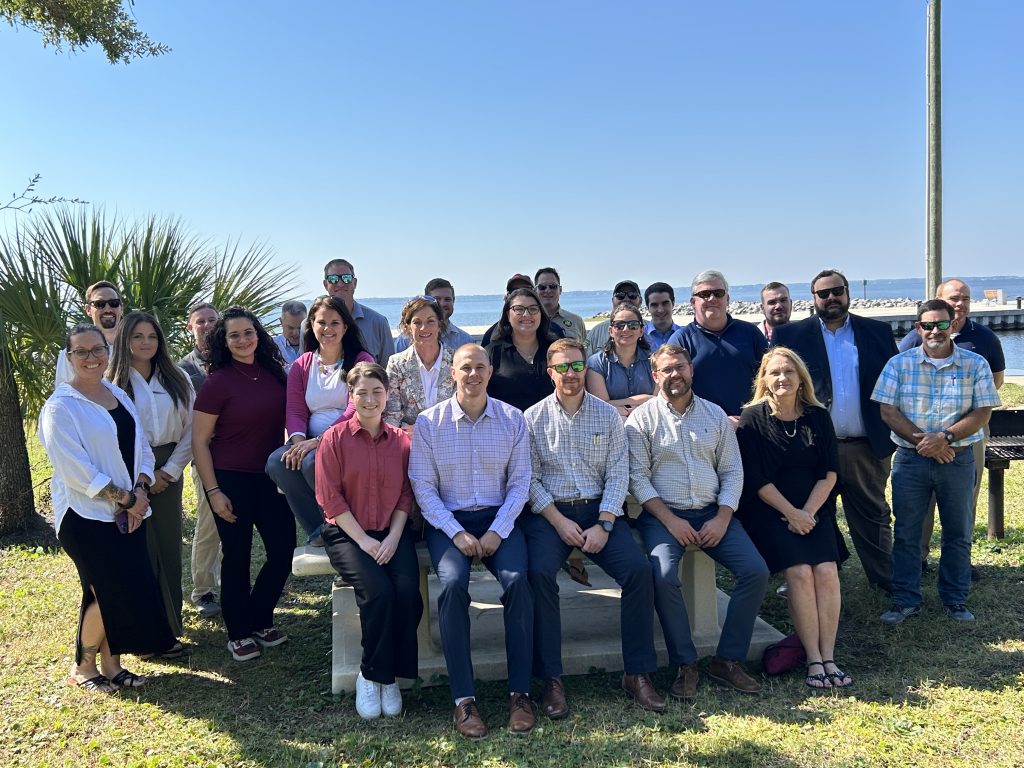

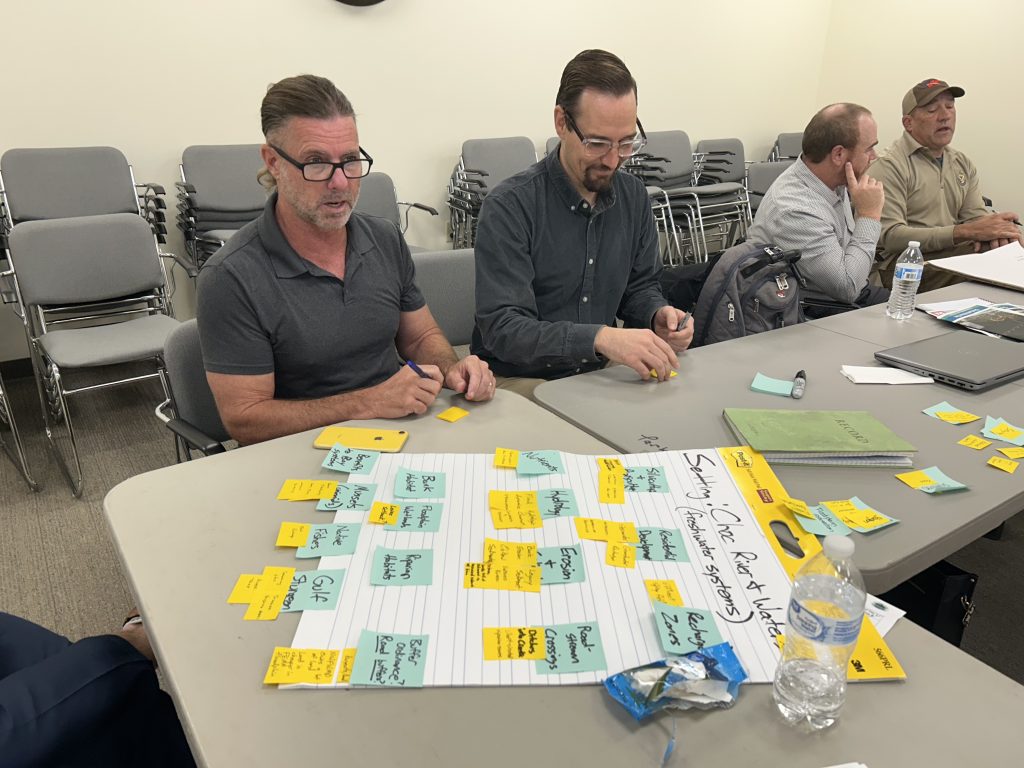
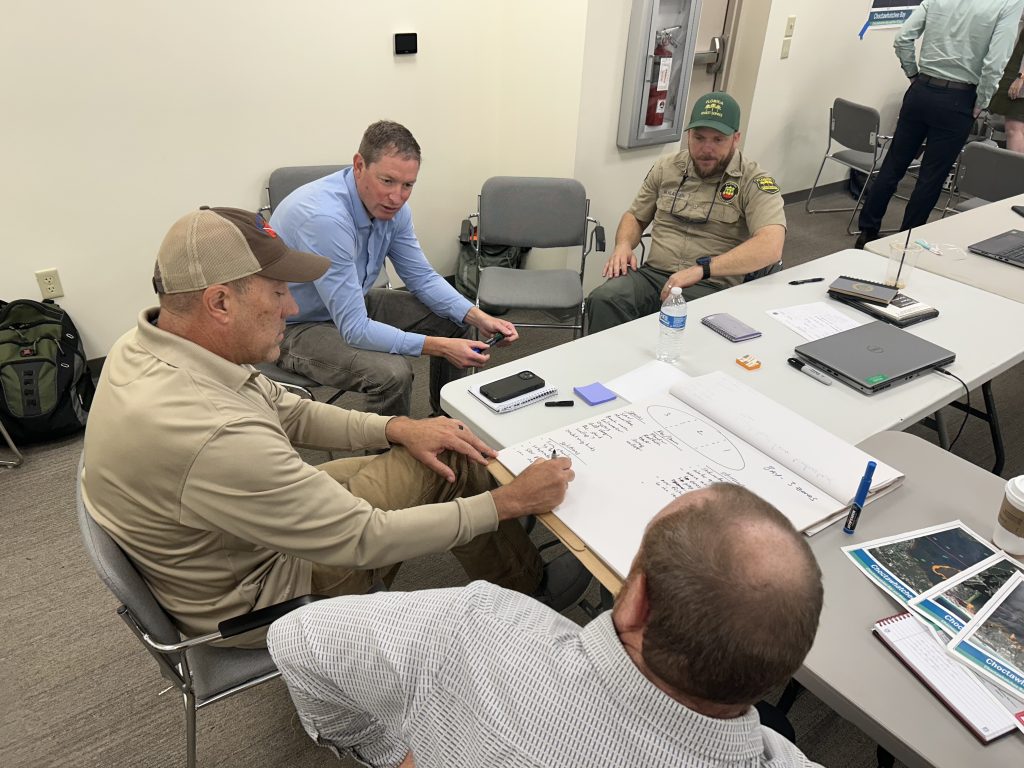
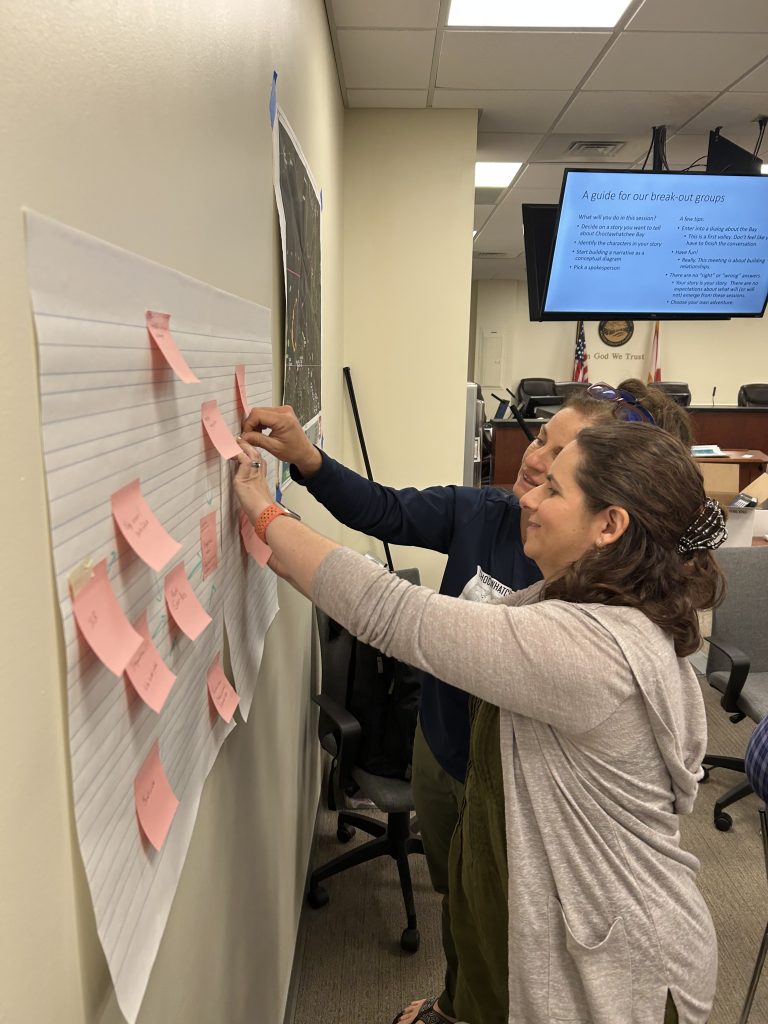
GENVEG AT SCIPY
Our collaborator Amanda Catlett, of the Information Technology Laboratory (ITL), brought the GenVeg project to the SciPy 2024 Conference is Tacoma, WA. SciPy is a community dedicated to the advancement of scientific computing through open-source Python software. Amanda was able to participate in tutorials and presentations while answering questions from fellow developers on how GenVeg modeling could be useful for their future research!
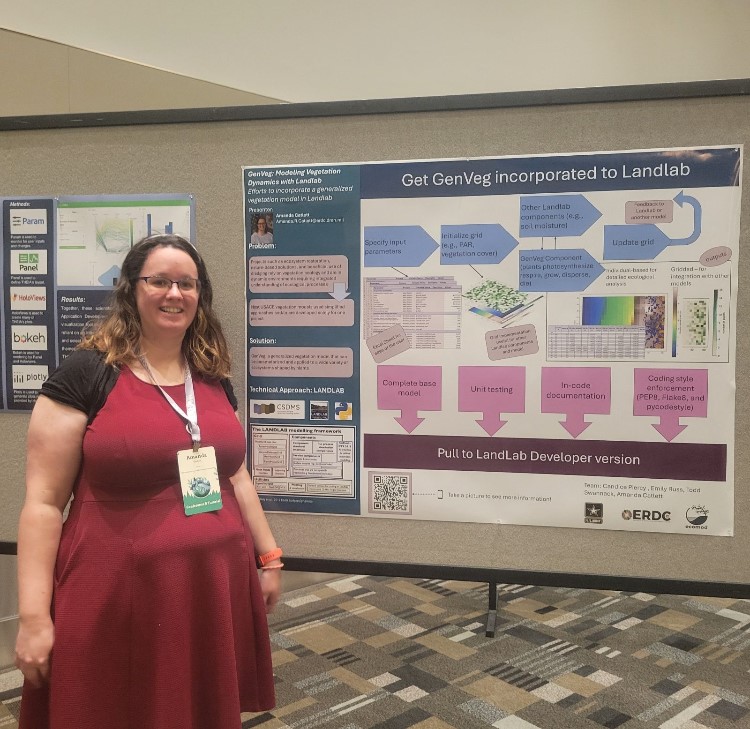
ECOMOD AT AEES
The 2024 Annual Meeting for the American Ecological Engineering Society (AEES) was held May 28-31st in Blacksburg VA, hosted by Virginia Tech’s Department of Biological Systems Engineering. The theme of the meeting was ‘Ecological Engineering & Design: Launching a New Era’. Dr. Candice Piercy was the invited keynote speaker and her address entitled ‘Engineering With Nature and the American Ecological Engineering Society: Shared Values to Address Complex Engineering Needs’ discussed the histories of both EWN and AEES. She proposed a future where AEES and EWN harnessed their common values to advance nature-based engineering philosophy throughout the industry.
ERDC researchers presented three technical talks during the meeting. Kiara Cushway spoke about ‘Developing Conceptual Ecological Models for Hydraulic Analysis’, which studies collaborative research of ecologists and engineers and provides recommendations for incorporating conceptual models into ecological analysis. Samantha Wiest discussed her work on ‘Assessing Impacts and Benefits of Riparian Zones with the Riparian Ecological Function Index (REFI)’, a project that developed the REFI as an ecosystem assessment technique. Candice Piercy presented a collaboration between EWN and the University of Georgia to develop training on nature-based solutions (NBS) within engineering.
Meeting attendees also participated in local field trips, discussions on teaching ecological engineering, and a business meeting. Funding for these studies were under the Aquatic Nuisance Species Research Program (ANSRP) focus on Next Generation Ecological Modeling and EWN.

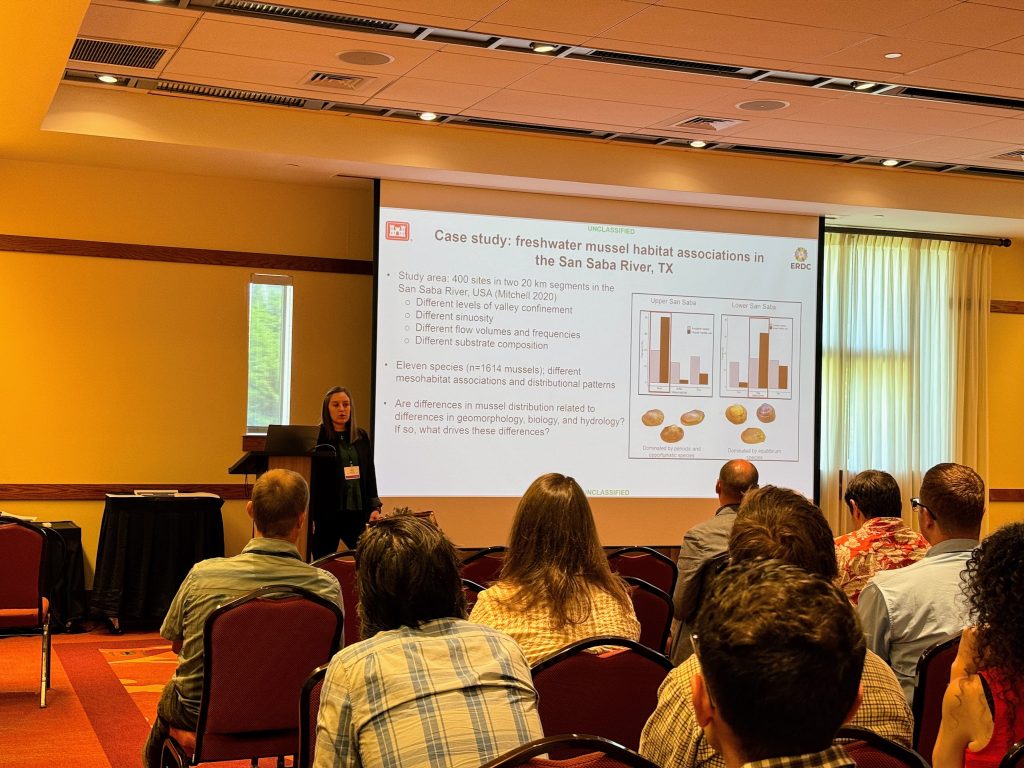

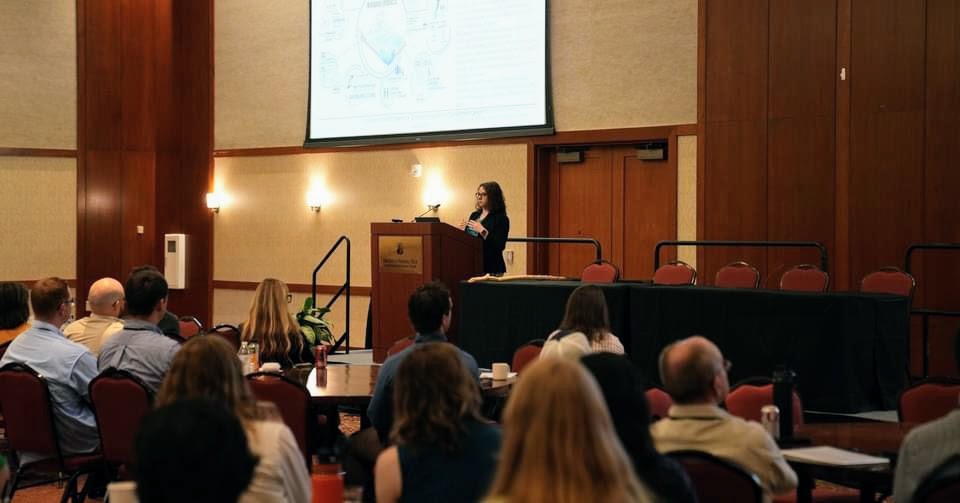

ECOMOD AT CSDMS
Drs. Candice Piercy, Todd Swannack, Emily Russ, and Thomas Huff of the Integrated Ecological Modeling Team (EcoMod), within the ERDC Environmental Laboratory, attended the Community Surface Dynamics Modeling System (CSDMS; pronounced “Systems”) Annual Meeting in Montclair, New Jersey on May 14-16. The meeting theme was “Coastlines, critical zones, and cascading hazards: Modeling dynamic interfaces from deep time to human time.” The CSDMS emphasizes community development, support, and dissemination of open-source code and software that advances our understanding of earth surface processes.
Over 100 CSDMS members convened to share their research and participate in hands-on clinics for CSDMS-supported tools. Dr. Huff presented on advancing USACE planning and marsh management capabilities using the Comprehensive “Comp” marsh model, which integrates hydrodynamic, morphodynamic, and vegetation dynamics models to better capture hydro-eco-geomorphic feedbacks in salt marshes. Dr. Russ showcased the coupling of AeoLis, an aeolian sediment transport model, with the alpha version of the process-based Generalized Vegetation (GenVeg) model that is being developed as a component within the CSDMS’s python based Landlab toolkit. This model coupling enables exploration of different dune vegetation scenarios (species and distributions) to promote coastal resilience.
The EcoMod team also hosted a clinic on “Vegetation as ecogeomorphic features: Incorporating vegetation into earth surface models.” Over 20 participants attended this clinic that highlighted examples of how vegetation shapes landscapes and provided Jupyter notebook tutorials for including vegetation features into coastal earth surface models.
Drs. Piercy and Swannack also serve as co-chairs of the Ecosystem Dynamics Focus Research Group and attended the CSDMS Executive Committee Meeting on May 17 to discuss education and research directions and priorities and help facilitate collaborative opportunities with the other Focus Groups.


ALASKA DISTRICT WORKSHOP
Dr. Todd Swannack, co-lead of the Integrated Ecological Modeling Team, facilitated a two-day multi-stakeholder ecological modeling workshop for the Alaska district’s Homer Navigation Improvements Study for Homer Harbor located within Kachemak Bay.

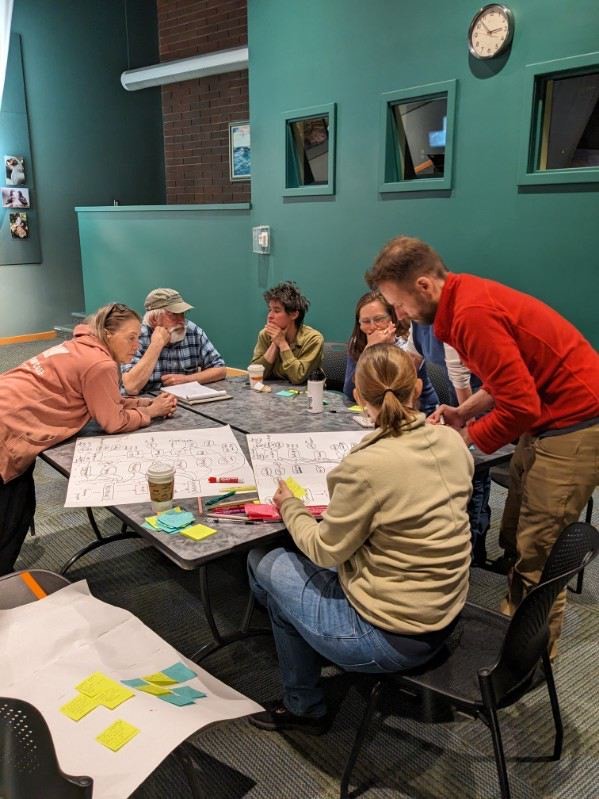
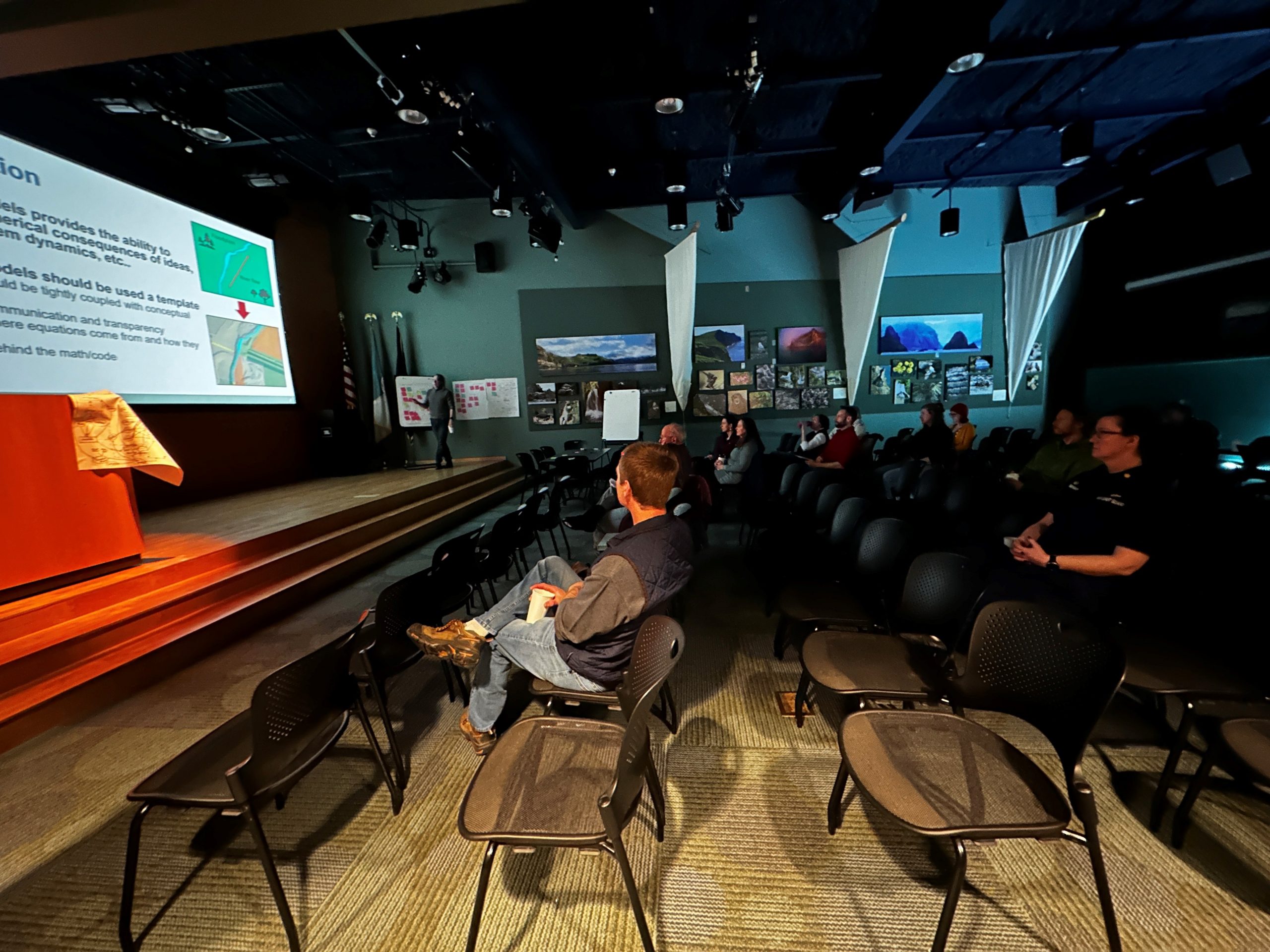
SANTA BARBARA, CA SUMMIT
Iris Foxfoot represented team EcoMod at the National Center for Ecological Analysis and Synthesis’s (NCEAS) annual Environmental Data Science Summit in Santa Barbara! The theme for the summit was Communicating and Translating Environmental Data. The event provided a valuable opportunity to form connections with students and environmental data science professionals, to spread awareness about ERDC, and to learn new science communication techniques and strategies. Iris joined a team of participants to delve into the question ‘How do we bridge the gap between researchers and practitioners in a way that is place-based and builds capacity?’.

ECOMOD AT ASCE
Candice Piercy and Emily Russ attended the American Society for Civil Engineers’ INSPIRE Conference in Arlington, VA. There was a heavy focus on nature-based solutions, so our partner at the Network for Engineering With Nature (N-EWN) gathered details on the event, including a panel hosted by Candice and a presentation from Emily. Visit their website for all the information, then look around at all the resources N-EWN has to offer!

ECOMOD IN WILMINGTON DISTRICT
Drs. Todd Swannack and Emily Russ from the Integrated Ecological Modeling team, along with Dr. Matt Balazik from the Coastal Ecology team, facilitated a multi-stakeholder ecological modeling workshop for the Wilmington District for their harbor deepening project. Over 10 different agencies and non-governmental organizations participated. The goal of the workshop was to develop both conceptual and quantitative ecological models that could be used to determine the potential effects of the harbor deepening on the ecological communities within the estuary and river system that connect to the project area.
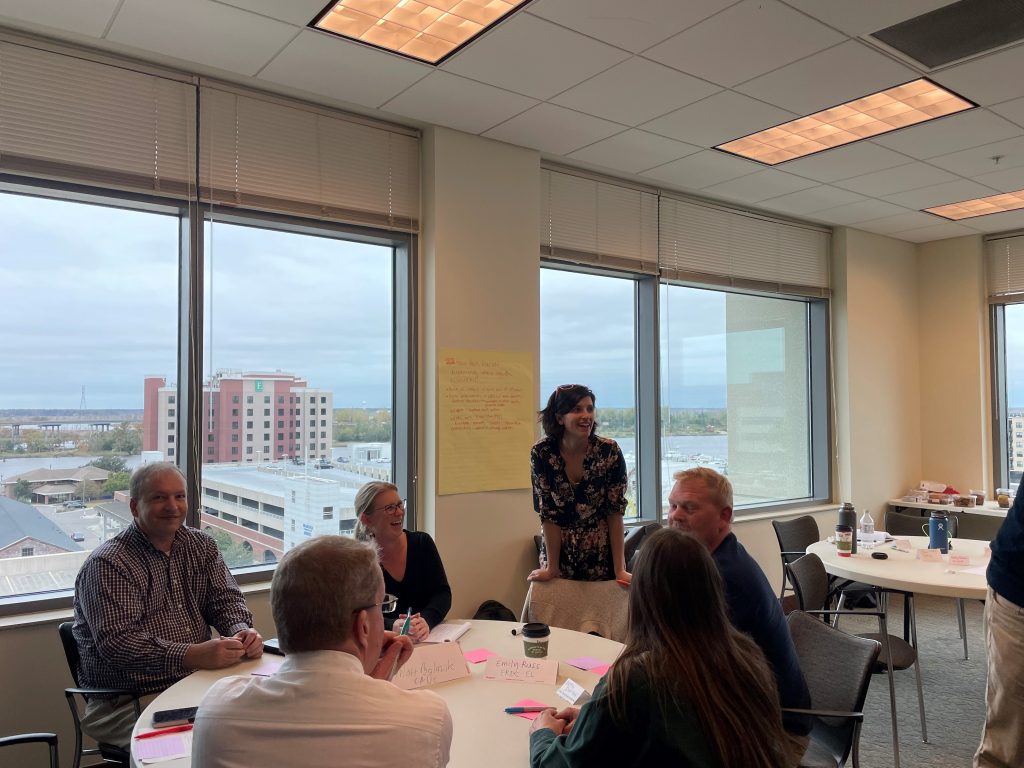
EWN IN NORFOLK DISTRICT
Last week Dr. Piercy along with researchers and program managers from the Engineering With Nature program traveled to Norfolk, VA. They met with the USACE Norfolk District and the City of Norfolk Office of Resilience to discuss opportunities to further incorporate nature-based solutions into the City of Norfolk Coastal Storm Risk Management project as it enters its construction phase. The City of Norfolk is heavily developed, requiring creative solutions that can tuck into the existing urban landscape.
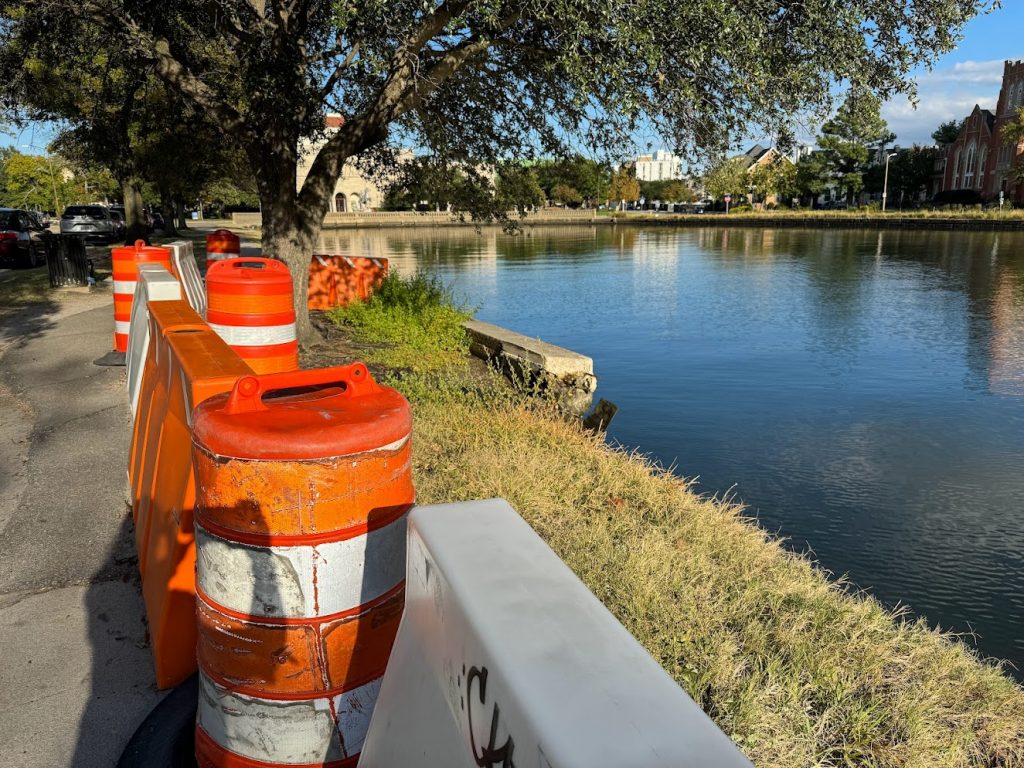
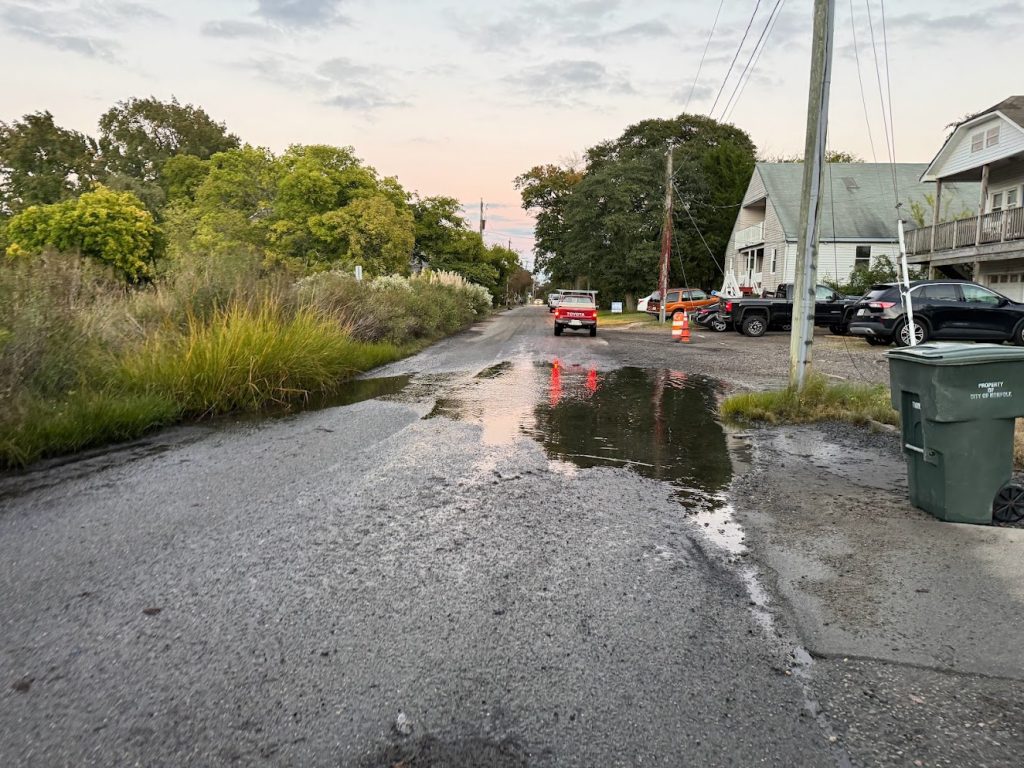
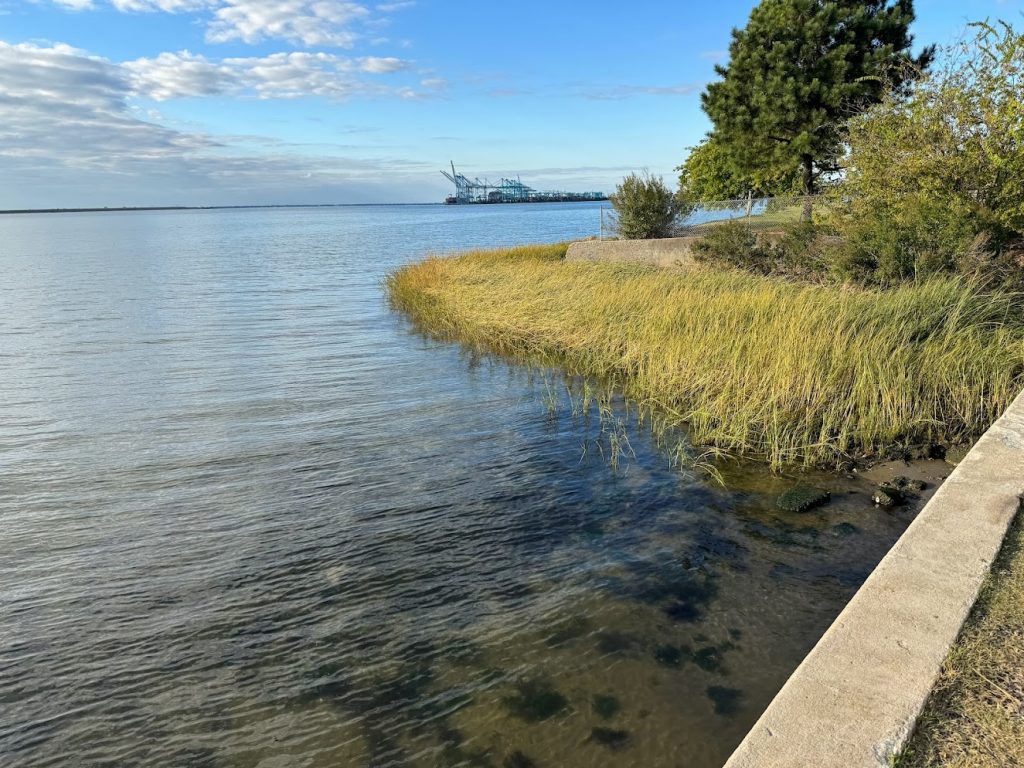

ECOMOD GOES TO AUSTRALIA
On Sept. 30th, Dr. Brook Herman led a session titled From species to communities to ecosystems: scaling ecological models to support restoration decision making at the 2023 World Conference on Ecosystem Restoration in Darwin, Australia. The overall theme of the session focused on how successful restoration must consider how spatial and temporal scales impact USACE ecosystem restoration. Speakers in the session included Drs. Safra Altman, Nathan Beane, Todd Swannack, and Ms. Darixa Hernández-Abrams.

TEXAS A&M UNIVERSITY COASTAL ENGINEERING & NATURE-BASED SOLUTIONS SHORT COURSE
Dr. Thomas Huff joined EWN program director Dr. Jeff King to discuss Nature-Based Solutions’ benefits and costs at a short course presented by Texas A&M University. They were also able to visit the USACE Galveston Coastal Project Site to observe the grey and nature-based features used to protect Galveston Harbor.

